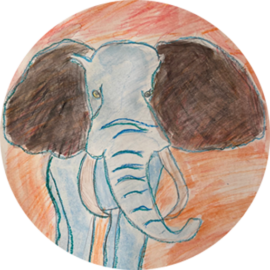Product People Will Get Us Out of the Fix
“It’s always the best who goes first” is what they used to say in the war movies I watched as a kid. I thought about that the other day when I heard Adrienne Tan give a talk about how the pandemic struck against designers and product professionals.
How does this correlate to the fact that a disproportionate number of our greatest brands and products were born out of recessions? That’s is something Adrienne has been giving some thought.
She starts with a clear eyed look at how product teams, especially in corporate settings, has enjoyed a long streak of hero-status. No big legacy player wants to be seen as the lethargic bureaucracy it really is, so they put their product teams in the limelight to give the impression of a creative company culture.
In reality however, these teams usually represents exceptions to the rule. They consist of free radicals who are allowed to think outside of the box, but—in or outside—their box is often the first to be dismantled when hardship strikes.
So just when innovation is needed the most, resources are strapped and gifted people find themselves without a salary. That seems like a given negative but isn’t necessarily, at least not in Tan’s book. Being “between opportunities” is often understood as code for being unemployed, but we should really stop thinking of this expression as a euphemism. Because in reality it aptly describes how one can be freed up to see the world with fresh eyes.
So what characterises a designer, or a “product person”, and how is that relevant to leaping into the unknown? In Adrienne’s view it’s not so much about what title’s you carried in the past as it is about your mindset. All the greatest product people are really people’s people; skilled not so much in turning a good product into something great, but to make sure you’re building the right product in the first place.
And listen: this shouldn’t be considered a luxury, it’s a necessity. And especially so in these rough times. Because if the global lockdown has brought anything positive, perhaps it’s the insights that we don’t want to be seen primarily as consumers; ready to be spoon-fed with the next bright and shiny but fundamentally pointless “user experience”.
We’re learning the hard way that there’s a difference between the essential and the superfluous and (I think) we start to feel a collective yearning for something that helps us create real change in the world.
And creating that which is radically new rarely happens by gradually improving on what’s already there. The essence of ‘product people’ is really to see what’s needed in the world and to create something out of nothing.
I’m confident they will keep doing that whether they’re getting paid or not, just like the jazz musicians kept jamming right through the great depression. It will be a slog for a while, but who said it was ever going to be easy?
With that said, I also agree with Adrienne that it’s probably more important than ever to come together in communities of practice. To support each other, compare notes, find inspiration, and team up in new constellations. Because now is the time when we lay the foundation for the next golden age.
It came as no surprise to learn that Adrienne Tan is chums with Marty Cagan who’s book Inspired : How to create products customers love is one of the best books I’ve read on product management. The way Marty writes about getting comfortable with staying in the painful but necessary product definition phase, echos Adriennes advice to us now:
“This is not the time to jump right into the ‘solution space’. Instead, let’s embrace the confusion and stay in exploration mode!”
